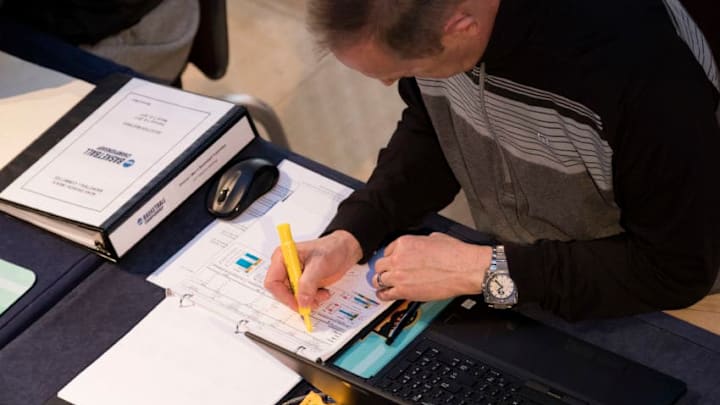Rankings are misleading, as not every top team is created equal. Here is a look at how to avoid falling into the trap of just looking at rankings.
When No. 9 Florida State went on the road to face No. 4 Virginia in early January, I heard someone express surprise at the Cavaliers being favored by as much as they were. Why the surprise? It just didn’t seem like a No. 4 team should be favored by that much over a No. 9 team. This logic was flawed, however, as the difference between those rankings varies every season. Just looking at the numbers can be misleading.
(All statistics used in this article were found via KenPom).
KenPom helps with this issue, as it not only provides rankings, but also a specific efficiency number tied to each team. Still, I often fall into the “rankings trap.” For example, I’ll see a team ranked 10th in KenPom and make certain judgments about them without looking at their actual efficiency relative to other teams.
This season, KenPom has an especially large “rankings trap.” The below chart breaks out the number of teams over the last few seasons in different KenPom “efficiency buckets,” with the top teams typically being close to or greater than 30.0.

This season, there is an abnormally small number of teams in the “<25.0, >=22.5 bucket.” This has created a significant gap between the 10th and 13th ranked teams in KenPom. One would expect these teams to be pretty close in efficiency, but this season, this is not the case. According to KenPom’s efficiency metric, Purdue is “better” than their No. 10 ranking appears and the same goes for Auburn with their No. 13 ranking.

The “rankings trap” will carry over to the NCAA Tournament as well. One might be hesitant to pick a 4 v. 13 upset, but do they feel this way based on how good each individual 4 and 13 seed is? Or are they just basing this off of their general perception of 4 and 13 seeds? Not all 4 and 13 seeds are created equal. Looking at something like Vegas spreads can help begin to escape the trap, as Vegas doesn’t treat every 4 v. 13 matchup the same; one might have a spread of 10 points, another 5.
One Random Thing

I made the above chart but didn’t get a chance to use it until now. This was my attempt to explain how Duke almost lost Wake Forest. Even though Zion’s absence was likely the No. 1 reason, I think there were some other factors as well. As poor as Wake Forest has been this season, their statistical profile actually matched up okay with the Blue Devils.
Duke has been a poor 3pt shooting team and Wake Forest gives up a lot of 3PA’s. Duke hasn’t been great at preventing offensive rebounds, and Wake Forest happens to be 28th in offensive rebounding per KenPom. Duke also isn’t great from the line, and the Demon Deacons happen to foul a lot. Lastly, Duke does a good job of minimizing opponent 3PA’s, but Wake Forest is used to not relying on threes too much, making this less of an issue.
In a tournament setting, I would never pick Wake Forest to beat Duke. Still, some upsets are more likely to happen than others, and it can often come down to how the teams match up against each other.
